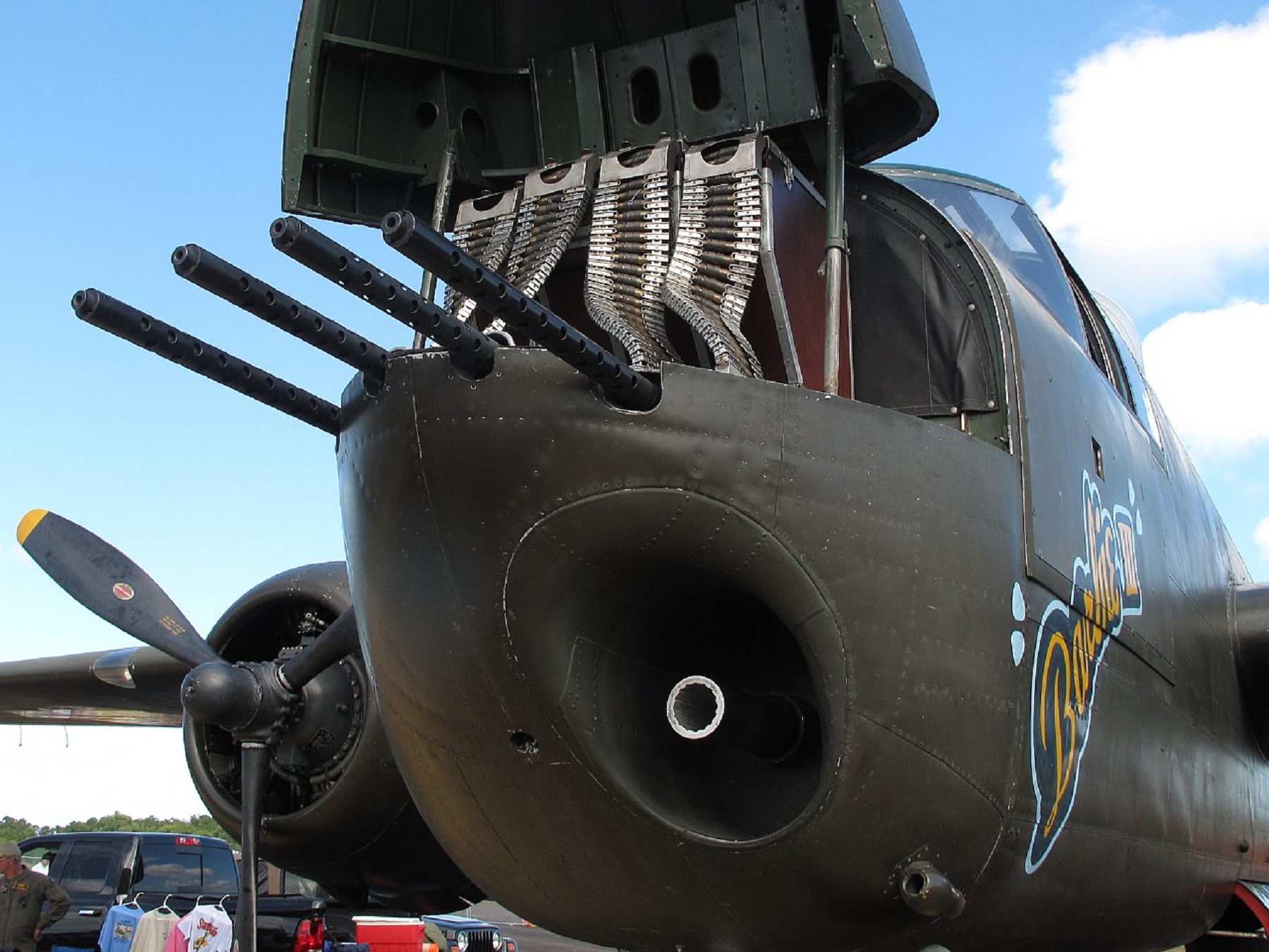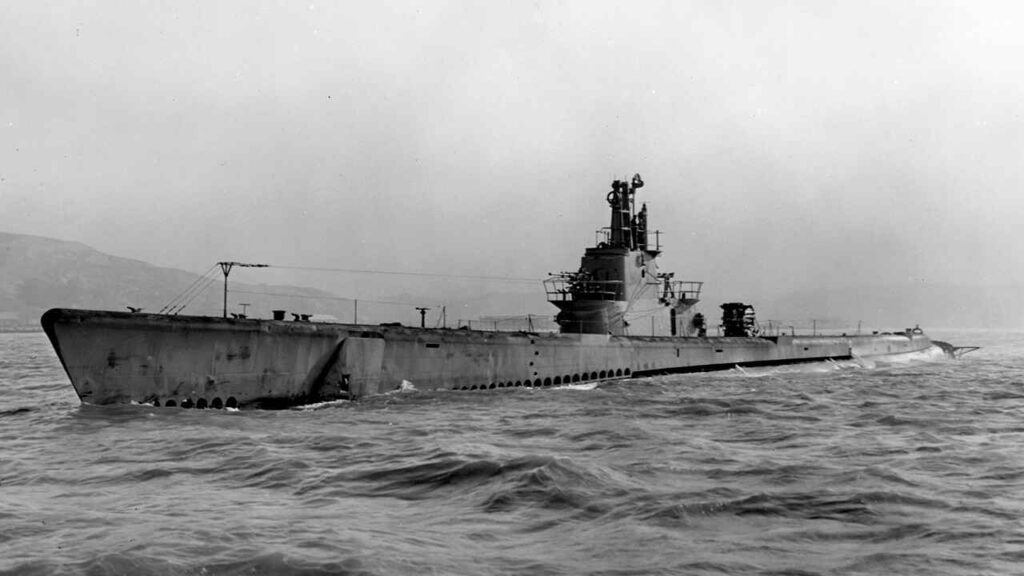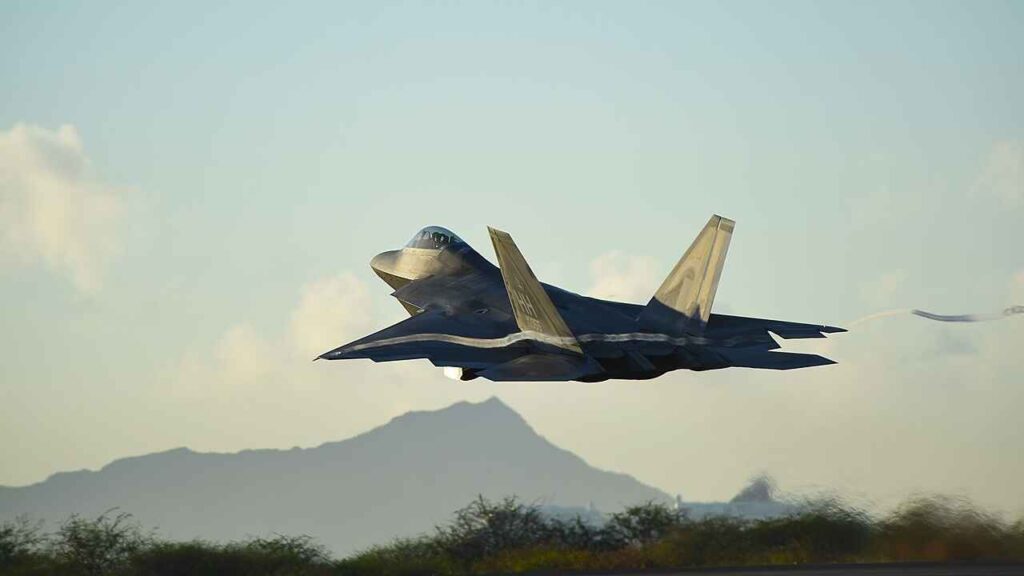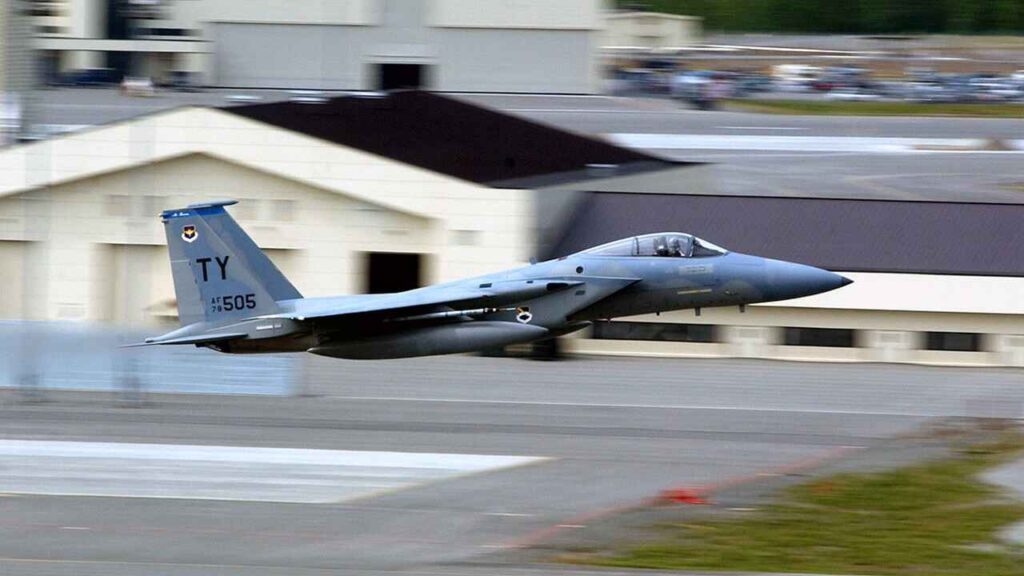
The B-25G Was America’s First “Gunship”
Here’s What You Need To Remember: The ‘gunship’ had one purpose – to shred Japanese shipping in the Pacific. Through careful trial and error on weapons use, the gunships became very, very good at this.
It’s an axiom in military aviation that for all their potential aesthetic appeal, combat aircraft are little more than weapons platforms meant to efficiently deliver deadly payloads on an enemy. However, size and weight constraints have always imposed greater limits on what can be carried by combat aircraft than by ships at sea or vehicles on land.
But for every rule, there is an exception. During World War II, Germany and the United States both experimented with installing 75-millimeter guns usually mounted on tanks on ground-attack aircraft.
The German Hs-129B-3 armored ground attack plane and the speedy Ju-88P-1 bomber both sported long-barreled anti-tank guns for busting Soviet T-34 tanks.
But when the U.S. Army Air Force procured the B-25G Mitchell, it had a very different mission in mind—sinking ships at sea. Japan’s sprawling Pacific empire could only be sustained through frequent supply convoys. When the United States set about dismantling Tokyo’s network of island bases, it decided it would only seize key islands, and allow the rest to ‘rot on the vine’ by cutting off their resupply convoys.
While U.S. submarines inflicted the greater share of Japanese shipping losses, airpower could be more rapidly concentrated to hammer large Japanese convoys.
Relatively agile light and medium bombers like the A-20 Havc and B-25 Mitchell played a key role in this often-forgotten campaign. The dapper North American B-25 was particularly well known for its role in delivering a morale-boosting one-way strike on Japan immortalized in Thirty Seconds Over Tokyo.
But a difficulty with the B-25 was that it remained very difficult to accurately strike ships with unguided gravity bombs or malfunction-prone torpedoes. Some B-25 pilots resorted to skip-bombing—literally tossing bombs across the water into targets as if they were skipping stones.
Thus arose the idea of mounting ship-blasting 75-millimeter guns based on the type used on the Sherman tank. A B-25C1 was initially modified into a prototype designated the XB-25G and made its first flight on October 2, 1942. Its glass canopy nose through which usually a prone bombardier could peer at targets below was replaced with a shorter armored nose with an M4 75-millimeter cannon mounted in a cradle with a spring recoil absorption system.
The M4 had a medium-velocity 40-caliber barrel and differed only minutely from the M3 cannon used on the Sherman tank. Its 15-pound shells even had to be loaded manually by the bomber’s navigator, drawing from an armored storage rack that could carry 21 shells. The M4 gun could engage targets from over a mile away, and the pilot and loader typically could loose four shells while executing a level approach on a target. Each shot would cause the huge gun to recoil 21 inches.
The pilot could also fire two fixed .50-caliber machineguns in the nose to help range the cannon and suppress flak gunners on enemy ships while he lined up his shots. If the tank gun wasn’t enough, the B-25G could still carry 3,000 pounds of bombs or a torpedo in its bomb bay, and had two more twin M2 machineguns in a rotating top turret and its tail stinger
Though it engaged in limited combat against Axis shipping in the Mediterranean, the B-25G primarily saw action in the southern Pacific starting July 1943, flying from bases on the periphery of Australia. These expended all of their 75-millimeter ammunition just seven weeks after they arrived in theater. The weapon could engage vessels from up two miles away, sink smaller barges and transport ships with just a single hit and significantly damage larger warships.
You can see the B-25 gunships in action in this video. 400 B-25G were built and 63 B-25Cs converted to the G model.
Strafing by aircraft with heavy .50 caliber machine guns had proven effective in the Battle of the Bismarck Sea, so the following B-25H ‘Strafer’ model (1000 built) featured even more of them. These quadrupled the pilots forward-firing firepower with four nose-mounted .50-caliber machine guns, two more forward-firing M2s mounted in one or two blisters on both sides of the fuselage. Weight was saved by deleting the co-pilot’s station and incorporating a lighter-weight 75-millimeter T13E-1 cannon with a thinner barrel.
When you add in all the defensive machineguns, this meant some B-25Hs were mounting a ridiculous 14 .50-caliber weapons. The new model could also carry eight high-velocity rockets on wing racks that could be fired rapidly in devastating salvoes.
The B-25 entered service with squadrons in the Far East Air Force in February 1944, where a consensus emerged that the .50 caliber machine guns and rockets were much more practical for shredding the small vessels encountered in the theater than bulky cannons. Nonetheless, some of the Mitchells eventually received targeting radars to assist in ranging enemy ships. Marine units also received B-25Hs with wingtip APS-3 radars designated PBJ-1Hs.
Ultimately, the cannon-armed bomber failed to prevail not because it could not be done, but because it was not the most efficient solution for the job. Afterall, cannons are cost-efficient ways to sustain barrages over time—but combat pilots often only have a brief window in time to expend their weaponry. Under those circumstances, it’s preferable to release a hail of 3” rockets in the space of a few seconds than to pot away at length with a slower-firing cannon.
Still, every rule has its exception. Today, the U.S. Air Force operates AC-130 gunships mounting even larger 105-millimeter howitzers intended to fly in slow circles over combat zones, blasting targets below at its leisure.
Sébastien Roblin holds a Master’s Degree in Conflict Resolution from Georgetown University and served as a university instructor for the Peace Corps in China. He has also worked in education, editing, and refugee resettlement in France and the United States. This article first appeared in January 2020.
Image: Wikimedia Commons.


